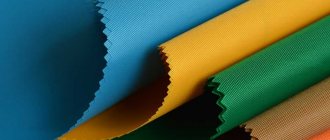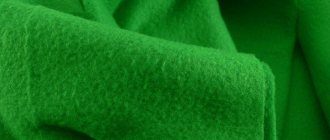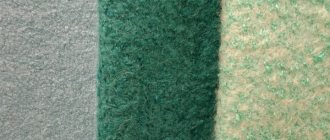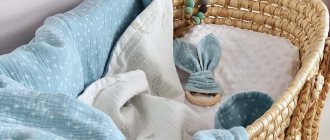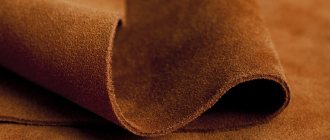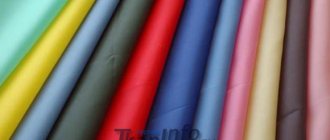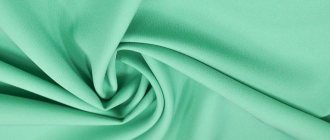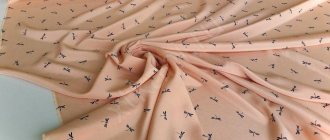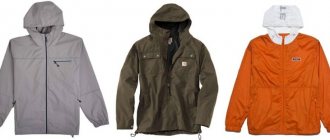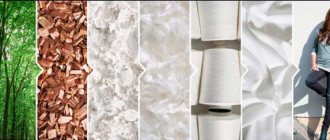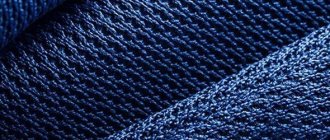What type of fabric is this?
Fleece is a tightly woven cotton fabric. There is a soft, low pile on the surface on both sides. There is no difference between the front side and the back side. The material is soft to the touch and quite heavy. A strong structure is achieved by plain or twill weaving.
Tale with different designs
To obtain the material, several stages go through:
- Receiving cotton and cleaning.
- Thread twisting and spinning.
- Preparing the canvas for dyeing and printing.
- Coloring.
- Drawing.
Short pile threads are used for softness.
What is a bike
Flannelette fabric is now a pleasant-to-touch fabric with a delicate double-sided pile and a dense structure. Those who are interested in what kind of fabric a bike is made of will probably be interested to know that it is made using twill or plain weaving. This, in fact, provides the material with such a dense structure.
The baize, which contains exclusively wool, is made only using the twill weave method.
But flannelette material that has just come out of the loom (harshness) does not have a very presentable appearance. Therefore, work on the canvas continues, and it is subjected to the following procedures:
- First, the canvas is thoroughly cleaned
- Then painted in one tone
- And at the very end they print the drawing
As for the composition of the material, it can contain only wool, only cotton, and cotton in combination with wool. Thus, this material is completely natural.
It is worth noting that some not very conscientious manufacturers still add synthetic fibers to the composition. True, it is very easy to spot a fake - pull the canvas in different directions. Real flannelette fabric does not stretch at all; if the fabric is even a little elastic, they are trying to deceive you. By the way, in another article we will tell you how to wash white socks correctly.
If you want to clearly see what the material of the bike looks like, look at this photo.
Composition and its properties
The flanette can be made only from wool or cotton, sometimes a mixture is used. But there should be no synthetic threads there. To check this, you need to stretch the material; if it does not stretch, then there are no impurities, and the composition contains only natural fibers.
Cotton
What are the properties of cotton or cotton fabric? What are its areas of application?
more details
Properties:
- Low price.
- High density.
- Hygroscopicity.
- Breathability.
- Wearing comfort.
- Softness.
- Good thermal insulation.
- Hypoallergenic.
Catalog of fabrics made from natural fibers
Story
The material of the bike appeared in Russia at the beginning of the 18th century, and then it was made on the basis of wool. Actually, the name is translated from French - “woolen material”.
Then the fabric looked a little different, not the way we are used to - it had a rich brown color, and the fabrics were dense and thick due to the thick, high double-sided pile.
Winter hats were made from bikes, and the material was also used as a warm lining for outerwear.
And finally, they began to add cotton to the wool fiber, they learned to dye it, and the fabric acquired the appearance in which we see it today. However, the thick bike of the old style (the so-called “coat” or “severe”, GOST 29298-2005) is still produced, and it has not lost its admirers. By the way, find out what tesil fabric is.
Types of fabric
The flanette is a fabric made from natural fiber. She may be:
- Woolen.
- Cotton.
- Mixed. Cotton and wool in equal parts.
Depending on the type of staining, there are:
- Smoothly colored. Or plain.
- Printed. There is a drawing.
- Harsh. Bleached material.
- Color. After coloring.
Comparison with flannel
Flannel and flannel, differences and similarities:
- Both fabrics are soft and cozy. They are strong, wear-resistant, durable. They absorb and allow moisture to pass through well.
- The materials are suitable for bed linen and home clothing. They make things for children and adults.
- Even baby diapers can be made from flannel. From the story only clothes. After several washes it takes on its final appearance. Flannel becomes softer with each wash.
- What is the difference in appearance: flannel is softer and more delicate, loose. The bike is two to three times denser and weighs more. Its pile is thicker and thicker. Flannel has nap on only one side.
- The composition is similar, but when making flannel, synthetic fibers are often added. It comes in half-woolen, with the addition of chemical fibers, cotton and wool. The flannelette variety is usually wool, cotton, or these two types of fibers are mixed.
Both species have similar characteristics, but differ in appearance and density.
Advantages and disadvantages
Advantages:
- Wearing comfort.
- Durability.
- Availability.
- Easy to care for.
- Softness.
- Versatility (used in the manufacture of various products, from clothing to shoes).
- Wear resistance.
- Retains properties after numerous washes.
Flaws:
- The increased density creates difficulties when sewing clothes.
- Woolen yarn is heavy.
- When synthetic fiber is added, the properties are reduced.
- Doesn't stretch.
Bicycle material in shoes - what is it?
The inner material of the bike in the shoes, what is it? It's simple, this is the name for shoe insulation made of wool. This fabric is made using a multilayer weave method, which ensures wear resistance and excellent thermal insulation.
The material has a dense combed pile, which gives it special softness. This insulation is used for sewing good winter shoes, in which the feet are not threatened by the greenhouse effect.
Read about other materials:
- Rep - what kind of fabric?
- Flannel material and its properties;
- Rip stop - you definitely haven't heard of this!
How to choose high quality fabric
A good bike made from natural fibers cannot be cheap. Therefore, if you want to purchase a fabric that is warm and pleasant to wear, do not skimp on your purchase. Also pay attention to the following points:
- Surface . It should be uniform, without pellets or bald spots.
- Smell . A strong chemical odor indicates the use of harmful dyes.
- Compound . The higher the percentage of synthetic fibers, the worse the fabric warms.
- Durability . If the material stretches easily, it means they are trying to sell you something else instead of a bike.
- Weave type . Twill fabric is more durable and wear-resistant than plain fabric. It's easy to check the weave type. Twill has a diagonal pattern, linen has a checkerboard pattern of threads.
If you want to sew warm clothes, choose fabric with a high wool content. And for baby blankets and diapers, a fabric composition with 100% cotton is suitable.
In what areas is flannelette fabric used?
The most widely used yarn is in the textile industry. The following things are sewn from it:
- outerwear: winter and demi-season coats, raincoats, linings for leather jackets;
- sportswear: sweatshirts, trousers, suits;
- bedding: blankets, rugs, bedspreads;
- household items: dressing gowns, pajamas;
- children's things: diapers, vests, rompers, pants, sweaters, overalls;
- foot wraps for the military.
The material is also used in the shoe industry. Insoles are made from flannelette fabric, as well as insulation for demi-season shoes.
Advantages
The material of the bike has the unique property of absorbing moisture and drying quickly. This feature allows you to use the cotton version for sewing delicate items: children's clothing, linen. A flannel vest or diaper for a child is preferable to smooth calico or knitwear. It maintains optimal temperature conditions, is pleasant to the body, and does not cause irritation. Which fabric to choose – cotton or wool – depends on the season. Both options are considered warm, but a woolen jacket warms better.
The advantages of flannelette products include:
- hypoallergenic;
- high strength;
- light weight;
- ease of care;
- reluctance to deformation.
What is the difference between flannel, lint, fleece and flannel
According to the description, the bike is similar to other fabrics - flannel, nap and fleece. Despite this, the materials have many differences.
Flannel is significantly thinner than flannel. Through the combing, which is not necessarily double-sided, the weaving of threads is visible. Flannel is a natural cotton fabric. It perfectly absorbs moisture and is quite warm, pleasant to the touch, and allows air to pass through well.
The lint is called needle-punched yarn. It is mainly used for decorative lining of the inside of shoes. This material is resistant to moisture and has a long service life.
Fleece is made from polyethylene terephthalate fibers. Externally, the structure of the material is similar to six, but it is formed from synthetic threads. Also, fleece is not able to absorb moisture. This distinguishes it from a bike, which absorbs liquid well.
How to care for things from yarn
You need to care for bike products as follows:
- You can wash things in an automatic machine with a spin in a centrifuge. The optimal temperature is 40-45°C.
- Ironing fabric with a hot iron is permitted. The pile will remain fluffy if this is done after the canvas has completely dried.
- To make clothes softer, it is better to additionally use conditioner during washing.
- To remove heavy stains, it is recommended to spot treat the fabric with soapy water.
Information on caring for a specific product is indicated on the item's label.
Easy care
This material is easy to care for:
- hot water will ruin the pile;
- flannelette fabric is washed at temperatures up to 40 degrees;
- use any washing and spinning mode;
- to preserve lint, iron only dry;
- Dry cleaning allowed.
Washable both by hand and in a machine. Use any powder.
Men's winter shoes, insulated with natural fur (sheepskin).
It is rightly considered the warmest, only felt boots and high boots are warmer than it. It is only important to distinguish real natural fur
, “composed” of sheepskin on sheep skin, from disgusting Chinese and Vietnamese synthetic fakes, popularly called “fish fur”. We do not sell such crap and are not responsible for its “consumer properties”. Men's shoes with fur work optimally at air temperatures from about -10°C to -20°C, if you have to STAND IN THE WIND WITHOUT MOTION FOR A LONG TIME. Or when “outside” it is colder than -20°C, but there is no need to stand without moving for a long time. Such weather in winter is typical for harsh regions north of St. Petersburg and/or east of Perm. Also, shoes with natural fur are recommended for pensioners and similar elderly men who, due to their age, cannot walk quickly and often have problems with the blood vessels of the legs, which impede blood circulation and natural heating of the feet. Without regional reference.
A common mistake is the constant use of high-quality shoes with fur by young and relatively young men in the Moscow region, the Volga region and in more southern regions. Over-insulated shoes stimulate increased sweating in the feet, and two layers of skin (outer and inner layers) block natural steam and heat exchange, causing sweat to accumulate in the insulation. The main culprits of mistakes are stupid mothers who overprotect their sons and impose on them an inadequate choice of obviously inappropriate winter shoes. The result is useless financial losses coupled with constant bad foot odor. It would be better to teach the offspring to put on clean socks every day.
Winter and autumn men's shoes with membrane lining.
Membrane insulation
There are 2 types - low-quality Chinese/Vietnamese/Thai in bright and wretched Asian shoes for young and youthful imbeciles. And high quality European insulation in beautiful, strong and durable products from decent European factories like the Italian Grisport. It is called membrane because of the selective properties of these lining materials - they “pull” sweat into the boot and do not allow it (as well as water from outside) to pass back to the feet. High-quality shoes with membrane insulation are similar in their heat-protective properties to products with wool insulation, and will last a little longer if they are not “killed” by careless treatment.
Common mistakes are accelerated wear of the membrane fabric due to external contamination (sand) and poor drying. Unlike fibrous wool, boots with a membrane require regular “shaking out” of foreign debris. If this is not done, then solid abrasive contaminants penetrate inside the boots (usually on the toes) and actively rub the lining and insoles in places of close contact with the feet. As a result, instead of the “legal” 4-6 years, high-quality shoes will last only 2-3 years, which is not good. In addition to shaking out, modern membrane-lined shoes require daily removal and separate drying of the insoles. It is made using an injection molding assembly method, which is good for everyone, but only makes it difficult to remove sweat from the heel and sole areas. Therefore, removing the insoles and drying them separately, and not interfering with the natural drying of shoes with different socks and crumpled paper is extremely important for them.
